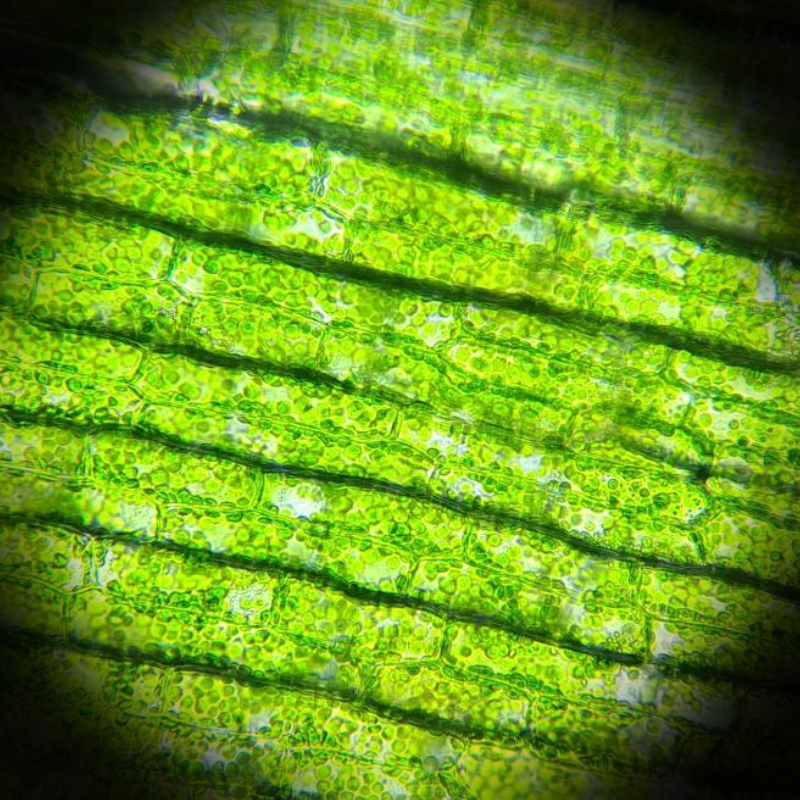
This cell was taken from waterweed on 29.9.25. You can't see the nucleus, our teacher told us it's because the chloroplast covers it. It's hard to see the cell walls, but they are kind of outlined by clusters of chloroplast. All of the green specks are the chloroplast.
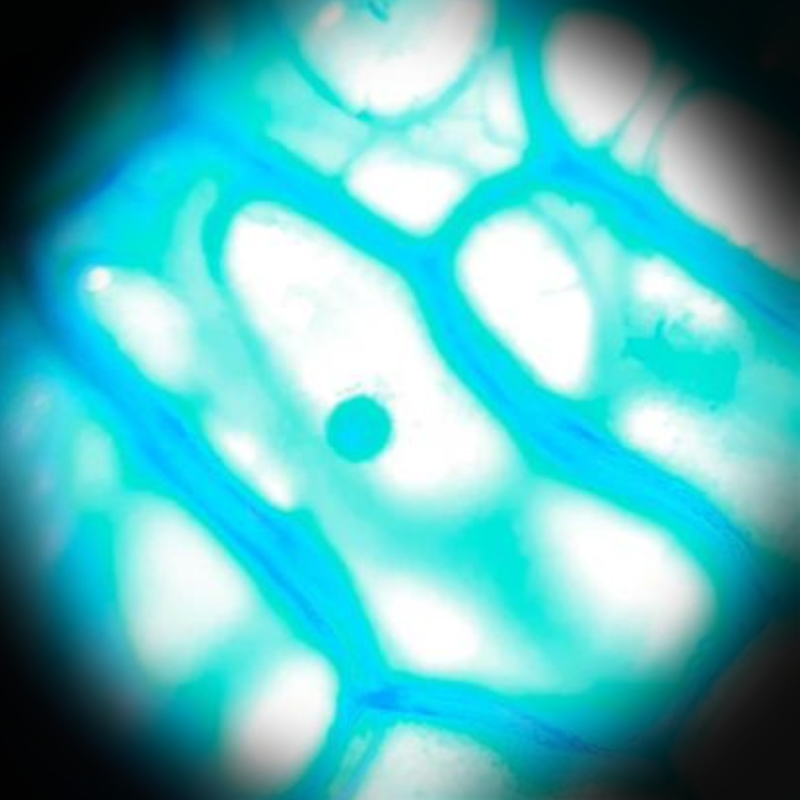
This cell was taken from an onion (white) on 29.9.25. It was colored with methylene blue, which makes the cell wall and nucleus easier to see. I don't think I have to point out where these are.
.png)
This cell was taken from my cheek mucous membrane on 29.9.25. It was also colored with methylene blue. I am an animal, so my cells don't have any walls, and in the image you can't see the celmembrane, since these usually aren't shown on light microscopes. You can see the nucleus, though.
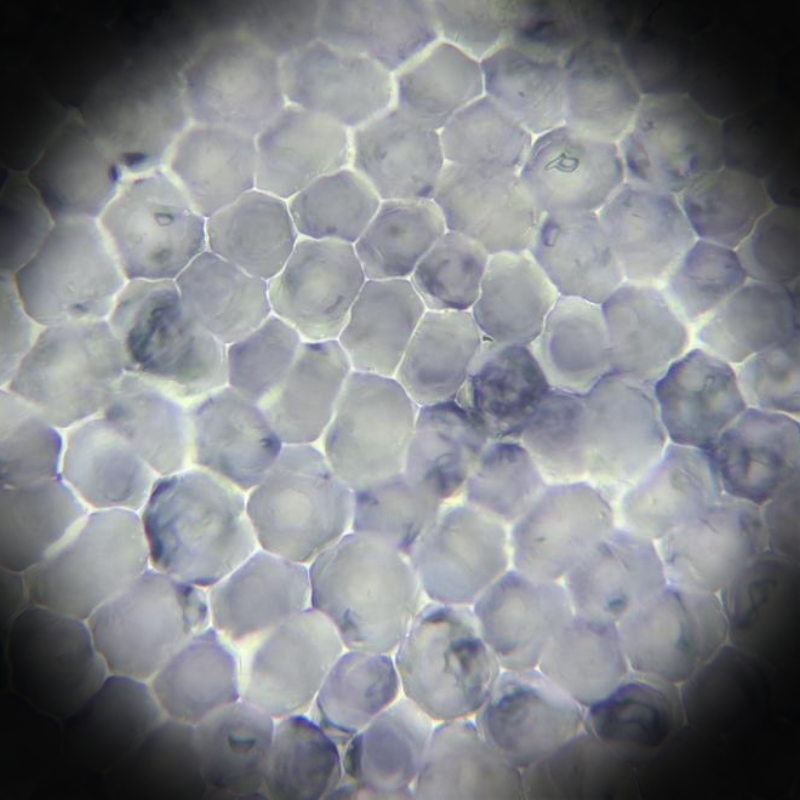
This cell was taken from a petal - I'm not sure from what flower it came - on 29.9.25. I'm pretty sure you can see the cell walls, but you can't see much else, which was kind of strange. On other things I saw - such as the waterweedcells - you couldn't see the nucleus because it was covered by the plastids. But you can't see the chromoplast here either, which I had expected to see, too. I also looked at a tomato cell (not pictured) and the chromoplast was hard to see, so maybe they were present here.
.png)
This cell is also from my own cheek mucous membrane, taken on 29.9.25. Colored with methylene blue. I made this one first, and if you can see the cell isn't very "good". None of the cells in this preperation were "good", so I had to make the other ones. When I first saw this, I honestly thought I had some crazy ilness or something, but my teacher told me that, because my cells have no cell walls, the cells just managed to merge together - the preperation was difficult to make, so that might have caused this. In the picture of the other cell, you can also see a little fold on the left underside. In this picture, you can see multiple cell nuclei, I think 2-3.
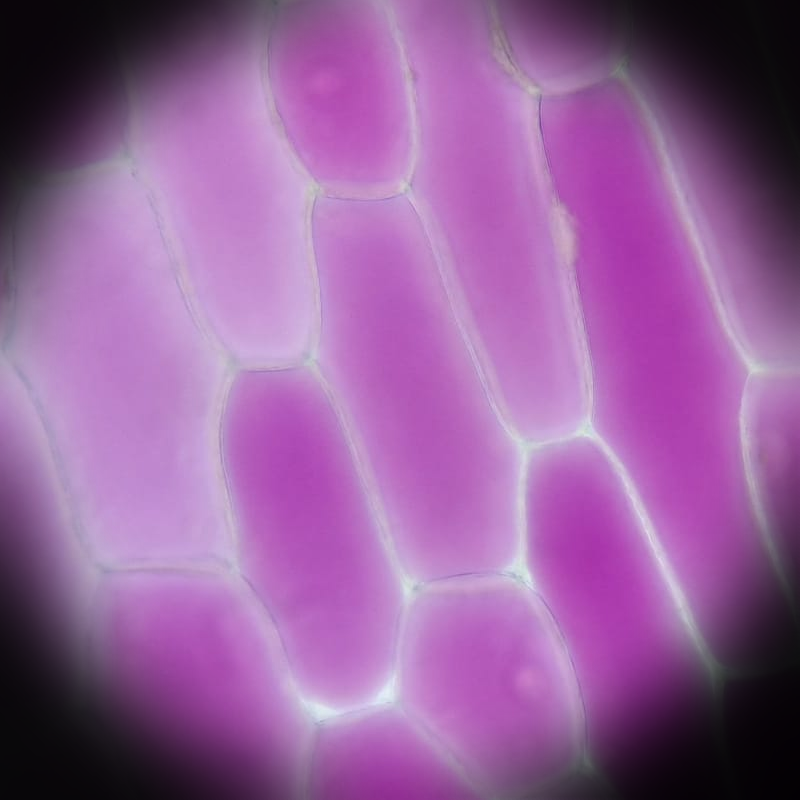
This cell was taken from an onion (purple/red) on 20.10.25. It was put into a solution of 0% Potassium Nitrate (KNO3). The KNO3 was a hypotonic solution, meaning that it had a lower concentration of dissolved particles outside of the cell compared to inside the cell. Osmosis causes water to move from a lower concentration of disolved particles to a higher concentration. So, water from outside of the cell was entering the cell, causing it to become turgid (which, plants prefer to be a little bit turgid, since they get strength from the water).
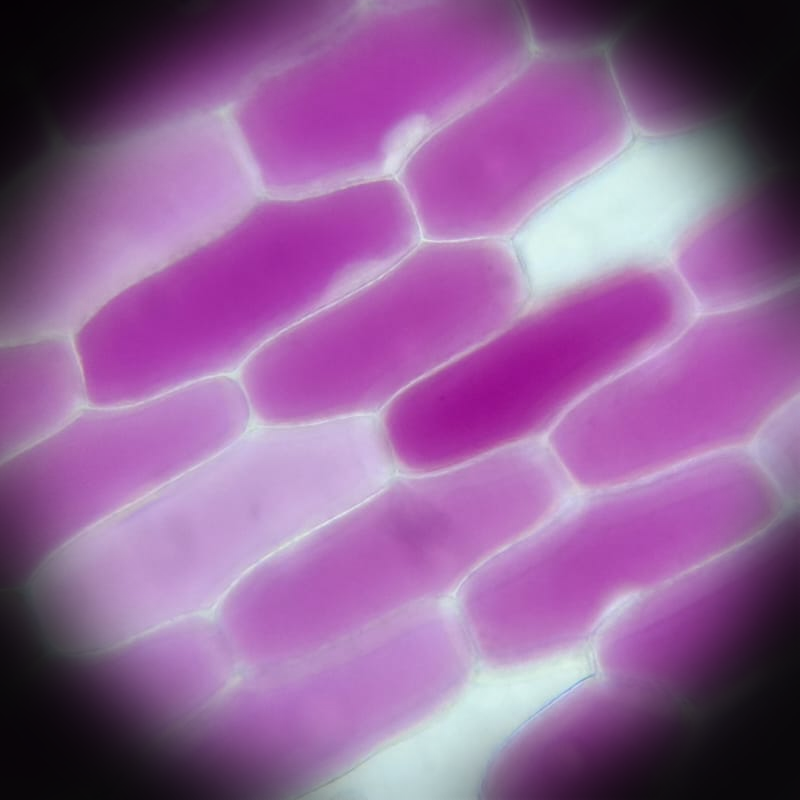
This cell was taken from an onion (purple/red) on 20.10.25. It was put into a solution of 2% (KNO3). The KNO3 was a hypotonic solution, so this cell was also turgid.
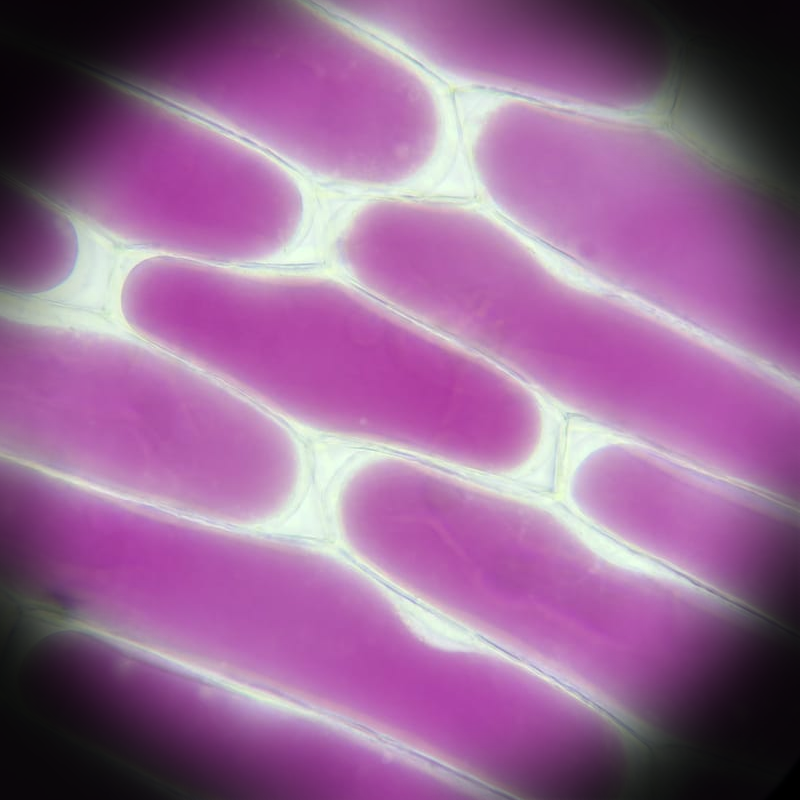
This cell was taken from an onion (purple/red) on 20.10.25. It was put into a solution of 4% (KNO3). The KNO3 was a isotonic solution, meaning that it had an equal concentration of dissolved particles outside of the cell compared to the inside of the cell. In this situation, water leaves and enters equally, too. So this is how a cell would "normally" look (this isn't ideal for a plant cell, though).
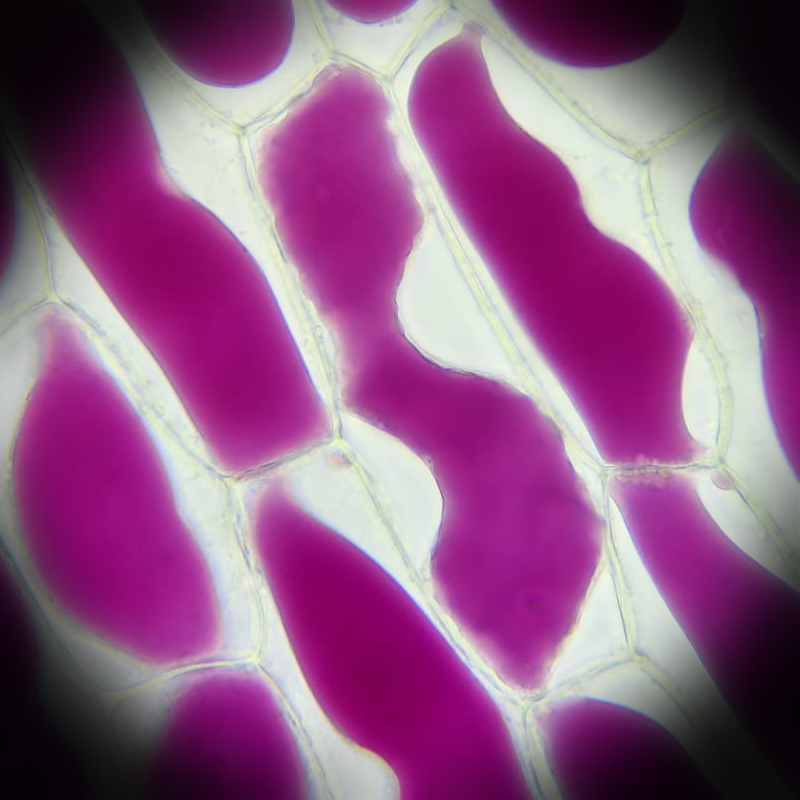
This cell was taken from an onion (purple/red) on 20.10.25. It was put into a solution of 6% (KNO3). The KNO3 was a hypertonic solution, meaning that it had a higher concentration of dissolved particles outside the cell compared to the inside of the cell. So, water from inside the cell was exiting the cell, causing it to become plasmolyzed.
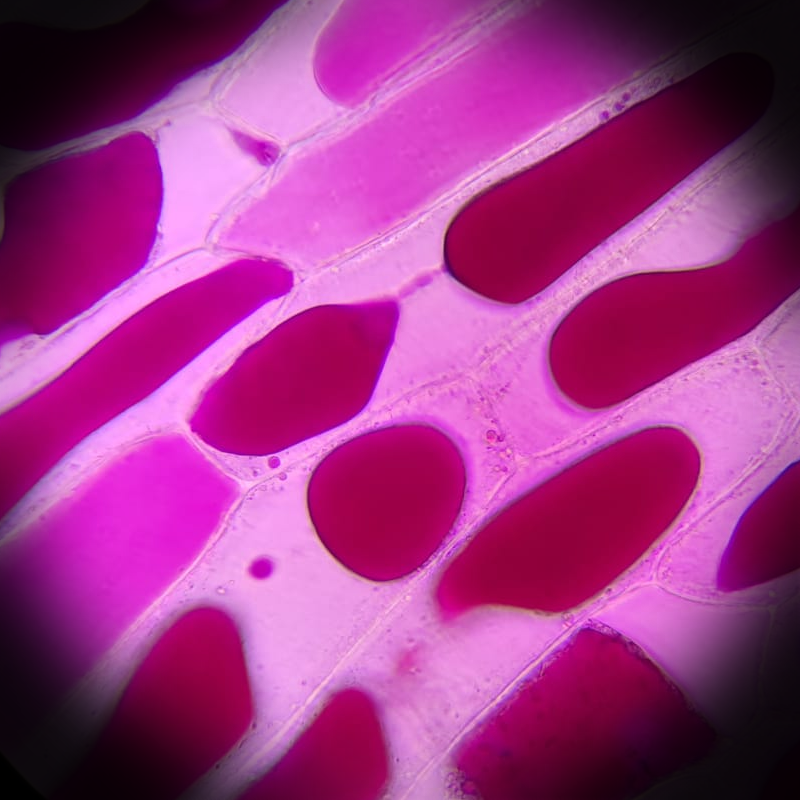
This cell was taken from an onion (purple/red) on 20.10.25. It was put into a solution of 10% (KNO3). The KNO3 was a hypertonic solution, so this cell was also plasmolyzed. (This image looks so pink because a lot of the color from the onion leaked out onto the slide, coloring the KNO3).